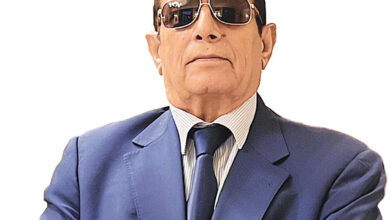Media and Exclusive Reports
 The Indian Navy’s iconic Harrier jump jets were given a ceremonious adieu this month after 33 years of stellar service. The occasion reminds me of my own career as I broke the news of India’s decision to acquire this aircraft.
The Indian Navy’s iconic Harrier jump jets were given a ceremonious adieu this month after 33 years of stellar service. The occasion reminds me of my own career as I broke the news of India’s decision to acquire this aircraft.
I had the privilege of working with UNI news agency, a great organisation then. The Editor, Mr GG Mirchandani, told us that an average journalist, particularly of a news agency, was a stenographer as he or she would report only in ‘said here today’ terms and UNI colleagues, he insisted, must produce exclusive reports.
Mr BRP Bhaskar, the News Editor and editorial mentor to most including myself, made sure that we did not make errors. The two bosses really made a great team and triggered the company’s rise away from ‘stenographical competition’.
Newspapers, from whom the revenue came, would not want the same ‘said here today’ reports from one more news agency, Mr Mirchandani pointed out. “You must read a lot, have a horizontally wide base of information if not knowledge and good social mobility,†he would say. There was a Rs 500 prize for The Exclusive Story of the Month, which in those days, was perhaps 20 to 30 per cent of one’s salary.
UNI was the only news organisation then to provide telephones and 75 per cent interest free loans for cars to all its reporters. Any expenses on hosting a dinner or giving a gift up to Rs 500 (about $70) towards ‘social mobility’ were reimbursed.
I had become a reporter in 1974 with literally an explosive entry, breaking news about India’s first nuclear test. Where it happened, what was happening at the test site, and the first international reaction in Canada withdrawing nuclear assistance to India, were all reported by me. I was graciously encouraged by the Chief Reporter, later Chief of Bureau and Editor, Mr Virender Mohan, who himself was the established leader in breaking news those days. I was his #2 in covering Defence and Foreign Affairs, till I was assigned in 1980 to set up a news network in the Middle East and sent to Abu Dhabi, UAE. The Ministry of External Affairs extended us full diplomatic support, with Mr JN Dixit, then Joint Secretary (XP), playing a key role. Notable support was given by Foreign Minister PV Narasimha Rao and Foreign Secretary Romesh Bhandari, who told his aide, Mr Pramathesh Rath, to make sure ‘Gulshan gets what he needs.’
UNI pioneered export of news from India, and nearly every English newspaper in the Gulf region subscribed to us. My allowances were liberal, diplomatic level, but there was a rider from Mr Mirchandani: I want my money back after 2 years. I resigned from the assignment after 12 years with 200-plus profit margin for the company. A big exclusive I had there was about the imminence of the US-led attack on Iraq in 1991 a few hours before Op Desert Storm was launched January 17.
The news about the Harriers was given to me by the then Defence Minister, Mr Jagjivan Ram, himself. Some of my other exclusive reports then included the Navy getting the Maritime Squadron from IAF and the three Service Chiefs signing a joint memorandum in 1979 for a cadre review in the armed forces.
Gulshan Rai Luthra




